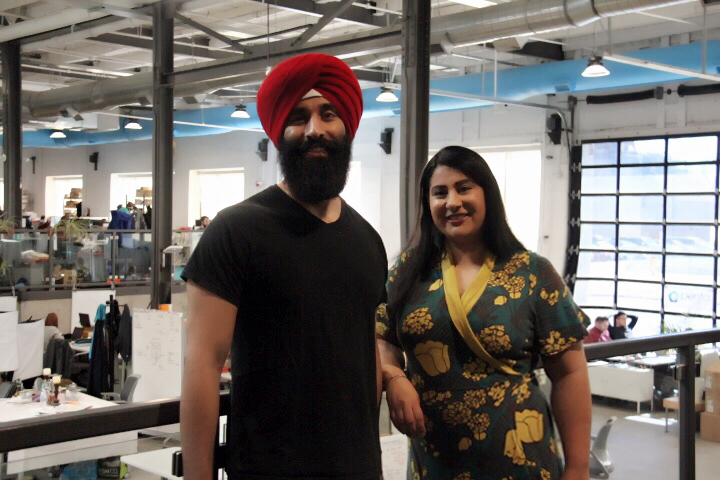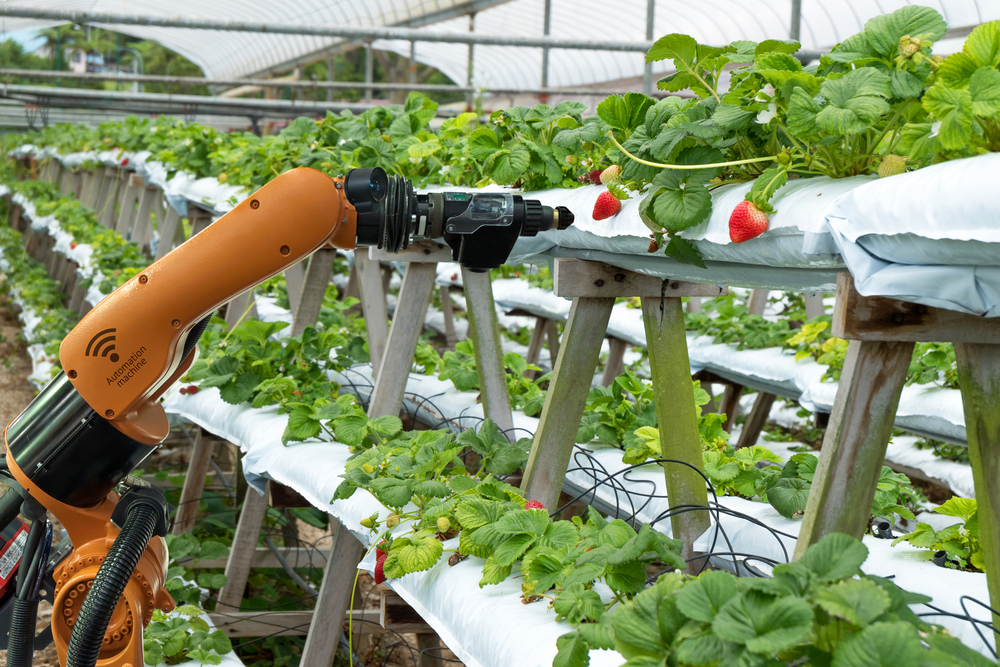We spoke to Harleen Kaur, co-founder of new AI anti-fake news app Ground, which released today. She told us about how technology has changed news forever, how the idea for Ground came about, and why her father-in-law thinks Michelle Obama is a man. Kaur has an impressive resumé. First a space engineer for NASA, Kaur then worked for a satellite start-up as the first engineer and realised the potential these satellites had. “I’ve always romanticised this idea that every place on earth should be accessible,” Kaur told us. “And that was the idea behind the satellite company that I worked with, that you could turn these satellites anywhere and take a look at what was happening, in real time.” Not content with this, she completed an MBA in business and got a job with Rolls-Royce, where she became the first female vice president and the youngest ever to boot. However, she missed startup life and moved to Berlin where she worked as a COO of start-up of One Football, taking it from five million users to a whopping 25 million, and this was her first brush with mobile apps and software. “What really struck me was the power of software, how many people you can impact with very little capital investment,” she said. She combined her dream of the world being accessible to everyone with her new software and mobile app skills and created UCIC (you see, I see), which she co-founded with her brother Sukh Singh. The app allows you to connect with people all over the world to see what is actually happening where they are, and what struck them was that people were almost always using it for news. “That was the idea for UCIC,” she said. “You can put the whole world on a map, and you can click on the world map and say ‘hey, I want to see what is happening in Bogota today, because I’ve heard some incident is going on, and I want it first hand, and I want to talk to a real human being, and I want your version.’ It’s a version, but it’s a real person’s version who is actually present.” And Ground was born. The app blends AI technology with human eyewitnesses to create a news experience that can actually be trusted. The app incorporates all standard journalistic resources and social media reports, as well as reports from the people who are actually there. The app places a virtual geofence around an event and contacts Ground users within that area to report on what is actually happening, inviting them to upload videos and pictures, and also to flag any fake news that is being published. The idea was to fight back against fake news and allow both established journalists and citizen journalists to have the chance to report the real story, making sure that anomalies and fake news are branded as such and downvoted. “The geopolitical climate changed due to the US election and everything, and the validity of news really came to the forefront,” she explained. “What we realised with UCIC is that it’s incredibly powerful when someone on the ground shows you photos and videos.” Kaur told us that there had been various moments with UCIC where what was shown through the app was very different to the version that appeared through traditional media sources or social media. The app also allowed eyewitness accounts from difficult-to-access countries such as Yemen. Each time something like this came up, they realised how a person on the ground is integral to broadcasting a well-rounded and truthful account of world events. “I think two kinds of people matter for news,” Kaur told us. “One is people who are journalists, who know what they’re talking about and can give the context and can write about that. And the other is the people who can see it or who are experiencing it. The rest of the world can hashtag about it, but Ground gives these guys the stage, these are the only people in the world who can actually upload content.” The AI technology within the app checks the geo-location of posts, and also checks the metadata of uploads, ensuring that videos and pictures haven’t been tampered with before being posted. Kaur recognises that technology has had an amazing effect on our society, and has made the world a level playing field, as she puts it. However, it has also caused the rise and propagation of fake news, which society isn’t ready for, especially those of the older generation. “My father-in-law can come out with something like ‘Hey, did you know that Michelle Obama is actually a man?” She laughed. “He can’t differentiate something he saw on Facebook, which is complete BS, to something from a reputable news source.” This was the world of previous generations; the six o’clock news world, where people heard something on the news or read it in the paper, and it was accepted without question. However, as the internet grew, news quickly transitioned from traditional journalism to social media, which although is very good at spreading information rapidly, was never meant for news. Fake news and technology work incredibly well together, but it’s not technology’s fault; it is just doing what it does best. Social media works so well because people believe in something if others believe in it. If there is some ‘news’ that has had half a million retweets, people will believe it is true. Kaur thinks that those who are propagating fake news are taking advantage of the fact that volume is seen as a signal of authentication. “Can you think about how mind-blowing it is?” she said. “Like, I’m sending a tweet or a picture, and I can choose from a drop-down menu or type in that my location is Charlottesville or wherever. And if five people retweet it, everyone thinks, okay, this must be true.” It’s not just social media that is having an effect on the way we see the news. Google news and Apple news work with AI to lengthen the amount of time a user spends on an article by showing them the articles they like to read. This means people spend longer on the articles, because they are being fed what they want, creating a ‘filter bubble’ that doesn’t show them all of the real news, or doesn’t show them that there is uncomfortable news out there. “It makes me angry to read [American right-wing news source] Breitbart,” Kaur said. “But maybe I should be reading Breitbart. On Ground we put it right next to CNN just to see, at least see what they’re saying. Look at what Russia Today is saying, at least so that you’re aware. I think awareness is very important.” Kaur hopes that Ground will fill in the gaps between traditional journalism and social media, so it will have the speed, power and reach of social media, but with the integrity of traditional journalism. Will Ground be the end of fake news? Will we ever get rid of it? Kaur laughed. “It’s a hard question,” she said. “I do think that we can. I think the first level is awareness, and we’re getting there. The second level is coming up with solutions. So I really hope Ground is a piece or a part of the solution that can help flag it, that can help raise awareness of what is the truth, and what isn’t.”
A revolutionary app that looks to combat fake news
By Techli
25 abril, 2018









